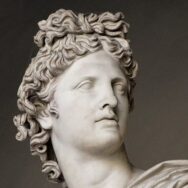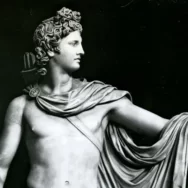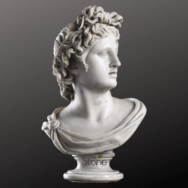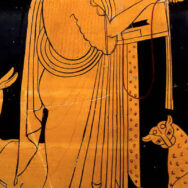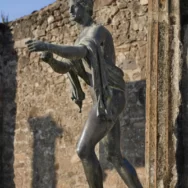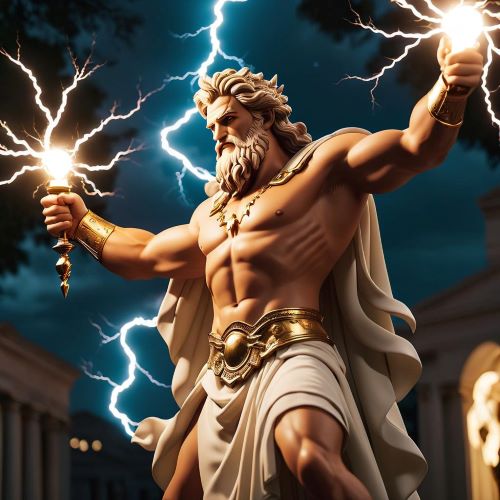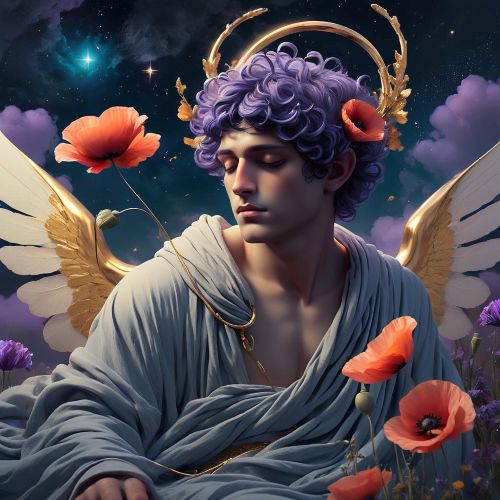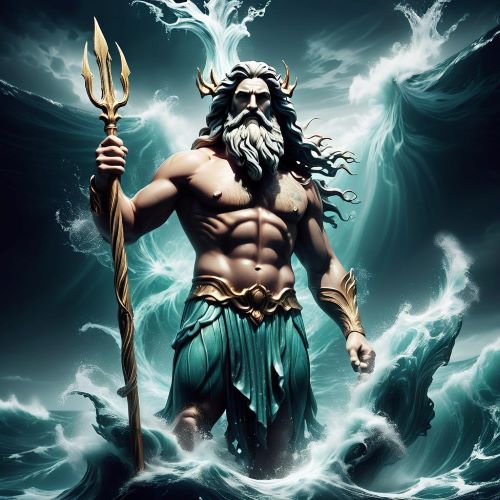Apollo : The God of Light
Listen
At a glance
| Description | |
|---|---|
| Origin | Greek Mythology |
| Classification | Gods |
| Family Members | Zeus (Father), Leto (Mother), Artemis (Sister) |
| Region | Greece |
| Associated With | Music, Light, Archery, Dance, Song |
Apollo
Introduction
The Greek god of light, music, poetry, prophecy, and agriculture is Apollo. He is a perfect blend of moral virtue and physical superiority, and he embodies the ideal of Kalokagathia. One of the most significant and influential deities in ancient Roman and Greek mythology is the complex and mysterious Apollo, who often appears alongside Zeus in literature and art. Known as Phoebus, the god is regarded as having multiple functions and meaning.
Although his exact nature is unknown, from the time Homer wrote Homer until his death, he was the god who sent or threatened people from far away. He was also the god who helped people purify their guilt and oversaw the religious laws of cities. He was able to communicate with people through the oracles and predictions of his father Zeus.
Physical Traits
In time, he became a well-rounded and popular Greek god, as he was the kouros, a classical male nude. He is often depicted with a bow and arrow in his handsd and a plectrum or a laurel crown on his head. The sacrificial tripod, which signifies his ability to predict the future, was also a common attribute of Apollo.
The Greeks regarded Apollo as a beautiful young man, and he was often depicted with various symbols of his powers and roles, such as the bow, cithara, and lyre. His sacred animals included the wolf and the raven.
Family
Zeus and Leto were lovers. As a result, his mother was punished by Hera, who sent the Python to chase after her. She was also prohibited from birthing on any solid ground. Nobody would accept the Titaness, who was pregnant until Leto delivered Artemis on the island of Delos. After delivering her child, Artemis assisted her mother in delivering Apollo. Apollo’s many lovers included Coronis, Marpessa, Cassandra, Cyparissus and Hyacinthus.
Other names
Apollo was often referred to as Paean, which means “protector” or “healer.” The name Phoebus was an ancient variation of Apollo, making it possibly more ancient than the original one. It was a popular choice among the god’s admirers.
Many ancient sources refer to the god as Phoebus Apollo or Phoebus. The Romans, for instance, would often refer to him as Phoebus instead of Apollo. Other names that are commonly used to refer to the god include “Loxias,” which is a reference to the god’s ambiguous oracles, and “Lyceus,” which is a word that evokes the region of Lycia.
Powers and Abilities
As a god, Apollo was often associated with music, prophecy, and all things beautiful. However, he was also known for being the god of plague, livestock, virtue, and medicine. He was regarded as the embodiment of reason, civilization, and aesthetic order. He would punish those who were overbearing or wicked.
When it came to the arts, Apollo was known for his ability to maintain order and harmony. On the other hand, Dionysus was a person who enjoyed chaos and ecstasy. This resulted in the pairing of the “Apollonian” and “Dionysian” poles of artistic creation. This was an opposition that was made famous by Friedrich Nietzsche.
Modern Day Influence
Despite being widely depicted in popular culture, the portrayal of Apollo is often superficial and lacks the proper context for his ancient persona. In particular, in the works of Rick Riordan and thye video game God of War, Apollo barely appears.
NASA named their upcoming moon-bound mission after Apollo due to his connection with the sun. It is believed that, until recently, the link between the two was not acknowledged. The agency wanted to follow in the footsteps of the great archer by taking on the mission.
In recent years, various films have featured Apollo. Some of these include Keith David’s 1997 animated movie Hercules and Luke Evans’ 2010 action movie Clash of the Titans.
Related Images
Frequently Asked Questions
What is Apollo the Greek god of?
Apollo, the Greek god, is known for his multifaceted domains, being the god of oracles, healing, archery, music and arts, light, knowledge, herds and flocks, and the protector of the young.
What is Apollo most famous for?
Apollo, the Greek god, is most famous for being the god of oracles, healing, music and arts, and light. He was the primary deity of the Delphic oracle, a patron of music often associated with the lyre, and as bright and powerful as the sun itself.
Is Apollo a god or hero?
Apollo is a god, not a hero, in Greek mythology. He is one of the Olympian deities and is known for his multifaceted domains, including being the god of oracles, healing, music and arts, light, knowledge, herds and flocks, and the protector of the young. While heroes in Greek mythology are often mortal demigods or individuals who performed extraordinary feats, gods like Apollo are immortal and wield greater powers.
Who is Apollo's wife?
Apollo, the Greek god, is known for having numerous love interests, but he never officially married. He had relationships with various women and some men, and fathered many children. Some of his notable relationships include those with Marpessa, Chione, Koronis, Daphne, Arsinoe, Kassandra (Cassandra), Kyrene, Melia, Eudne, Thero, Psamathe, Philonis, and Chrysothemis.
What is Apollo's weakness?
Apollo, the Greek god, is known for his many strengths, but he does have a few weaknesses. His main weakness is his unlucky love life. He had numerous love interests, but many of them met tragic ends or did not return his affection.

